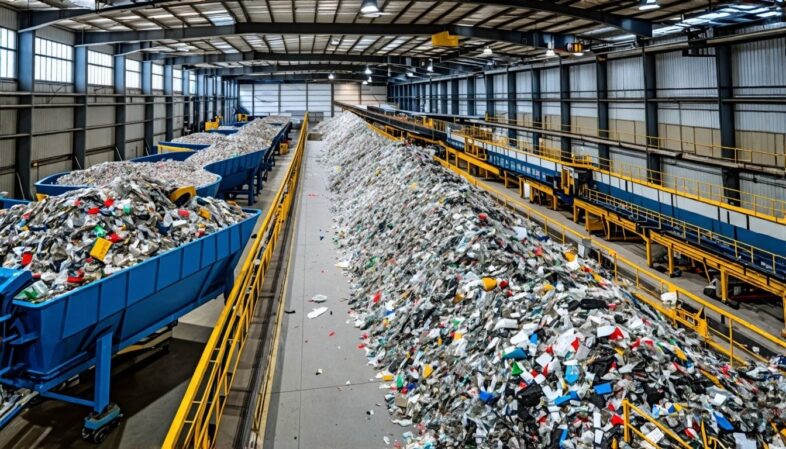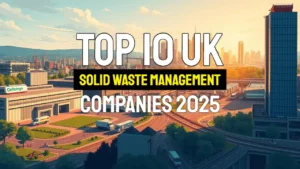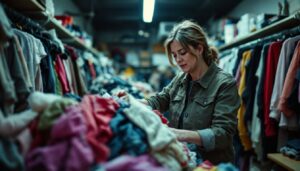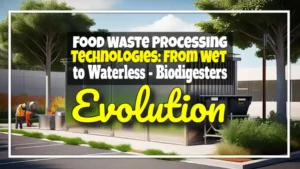Waste recovery is changing fast, thanks to new separation and sorting technology. This tech helps us sort trash better, so we can recycle more things. For example, Stadler has built a big plant in Spain for VAERSA that makes recycling easier and smarter.
Keson is finding new ways to deal with old tyres, helping both our pockets and the planet. In Europe, special machines now sort plastic better than ever before. This means less waste ends up in the bin.
Companies are making equipment for all sorts of recycling – from aluminium cans to old car batteries and even food waste.
People all over the world are working on this challenge together. Events in Las Vegas, Basel, and Dubai will bring experts together to share ideas next year. We're figuring out how to recycle tricky items like farm plastics and household bottles, too.
This story isn't just about throwing less away; it's about turning what we throw away into something valuable again.
Read on to see how we're doing it!
Advances in Separation and Sorting Technology – Key Takeaways
- Stadler built a new plant in Spain to sort and recycle waste better. It helps the environment by turning trash into useful materials again.
- Keson has found a way to recycle old tyres into new products, which stops them from piling up in landfills.
- Europe is using new tech like sensor-based sorting to make plastic recycling more circular. This means less plastic waste ends up harming our planet.
- Machines like the Drycake Twister depackaging system tear apart waste packaging, making recycling faster and creating less trash for landfills.
- Events like Recycling and Waste Management 2024 USA show off the latest in recycling technology, helping people learn how to handle waste better.
Innovations in Waste Recovery Technology
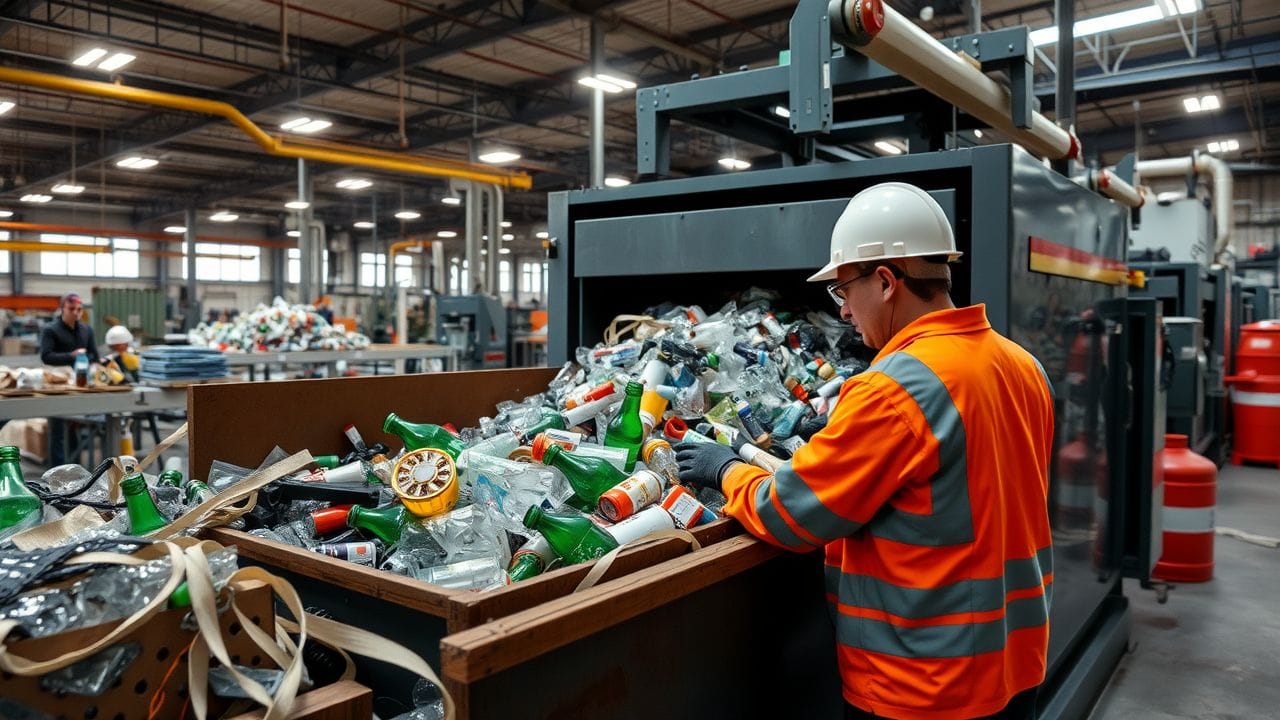
New tech in waste recovery, separation and sorting technology is making sorting trash faster and better for the planet. Machines can now sort out glass, plastics, and metals more effectively.
Stadler's new light packaging plant in Spain for VAERSA
Stadler built a new light packaging plant in Spain. This plant helps VAERSA improve their work. It sorts different materials so they can be used again. The plant uses advanced machines and technology to do this job well.
The place is set up to handle many types of waste. It makes sure that more items can go back into use instead of ending up as trash. This move supports the environment by reducing waste and saving resources.

“light packaging plant in Spain …” from interplasinsights.com and used with no modifications.
Keson's waste tyre disposal solutions
Keson tackles the issue of waste tyres head-on. Their methods turn old tyres into useful products. This process means fewer tyres pile up in landfills. It also makes money for their customers.
Keson uses advanced machinery to break down and recycle tyres safely.
Their approach helps the environment and boosts profits for those who manage tyre waste. With Keson, thousands of tyres get a new life instead of harming nature. This shows how Keson changes the way we deal with tyre disposal for the better.

“Keson's Waste Tire Disposal Solutions …” from recyclinginside.com and used with no modifications.
Advanced sorting technologies for achieving plastic circularity
Moving from waste tyre solutions, Europe focuses on new ways to sort plastics. These methods help make plastic use more circular. Technologies like sensor-based sorting and colour sorters are key.
They pick out different types of plastics from waste heaps. This makes recycling easier.
Using x-rays and optical sorters, these technologies find and separate plastics by type and color fast. This step is crucial for turning used plastics into new products again. It ensures less plastic ends up as trash, supporting a cleaner planet.

Recycling technology markets promoting sustainability
As we focus on advanced sorting technologies for plastic, it's clear that recycling technology markets play a big role in making our environment better. These markets use smart machines and tools to sort and recycle materials like paper, plastics, metals, and glass.
They turn waste into useful products again.
Recycling technology helps the planet by using less raw materials. It cuts down pollution and saves energy. For example, companies make new bottles from recycled ones instead of fresh resources.
This reduces the harm to nature. Recycling tech markets also create jobs and offer solutions for managing waste better.

“Advanced Sorting Technologies …” from recyclinginside.com and used with no modifications.
Recycling Sectors
Recycling covers a wide range of materials, from metals and plastics to textiles and electronics, all aiming for more sustainable living. Explore the future of turning waste into resources in this sector.
Aluminium, battery, construction and demolition waste, e-waste, end-of-life vehicles, fats and waste cooking oil, food waste, glass, metals, municipal solid waste, paper, plastics, cardboard, rubber, textiles, tyres, and wood recycling
Recycling tackles many types of waste. People recycle aluminium and batteries to save resources. They also handle construction rubbish, old electronics, and cars that no longer work.
Cooks recycle used oil and fats. Food scraps can turn into compost. Glass bottles become new ones again. All kinds of metals find a second life in recycling plants.
Cities focus on municipal solid waste, including paper, plastics, cardboard, and textiles. Rubber from tyres gets reused too. Even old clothes and wood don't go to waste; they're recycled for new uses.
This process keeps materials out of landfills.
Next are the latest case studies showing how all these efforts make a difference.
Innovative Separation and Sorting Technology Case Studies
Our case studies show how new tech makes recycling better. They include stories from around the world on sorting waste and saving resources.
Keson's sorting technologies in Jiangsu, China
Keson has set up a centre in Jiangsu, China. They use the latest sorting technologies here. These methods change how we sort waste for sustainability. The date is August 14, 2024.
Their methods make sure valuable materials do not end up as trash. This supports a circular economy where almost nothing gets wasted.
SPECTRO Analytical Instruments' method for lithium-ion battery recycling
SPECTRO Analytical Instruments has a new way to recycle lithium-ion batteries. They use a technique called elemental analysis with ICP-OES. This method finds out what elements are in the batteries.
It helps us recycle them better.
This process is good for the environment and makes recycling more effective. With this method, we can get valuable materials back from old batteries safely. It's an important step forward in battery recycling.

“ICP-OES by SPECTRO Analytical Instruments” separation and sorting technology from recyclinginside.com, and used with no modifications.
Drycake Twister depackaging system
The Drycake Twister depackaging system came out on August 9, 2024. This machine is a game-changer for recycling industries. It tears apart waste packaging and separates organic materials from non-organic ones.
This makes recycling faster and helps companies earn more money by selling clean recycled materials.
Using this device cuts down costs in waste processing plants. It can handle lots of different types of waste like food scraps stuck in packages. Its design focuses on being easy to use while being tough enough to deal with hard-to-recycle items.
The result? Recycling centers work better and produce less trash that ends up in landfills.
Next, let's explore the flexible plastic packaging capture at Material Recovery Facilities (MRFs).

Flexible plastic packaging capture at Material Recovery Facilities (MRFs)
Material Recovery Facilities (MRFs) have a key role in sorting out flexible plastic packaging. This task is vital for maintaining the quality of recycled materials. MRFs use advanced equipment to separate these plastics from other waste.
This process helps ensure that the plastics are ready for recycling, supporting sustainability efforts.
In one example, a facility used special machines designed to pick out flexible plastic packaging from tons of mixed waste daily. These machines use technology like magnets, air jets, and conveyor belts to sort the materials.
By doing this efficiently, MRFs play a crucial part in reducing landfill waste and improving recycling rates.
ATEX 22 rated electro overband magnets
ATEX 22 rated electro overband magnets are key for UK biomass plants. They safely remove metal from materials in explosive areas. This technology keeps workers safe and prevents fires.
It uses strong magnetic fields to pull metals out of waste or fuel. These magnets help in recycling and energy production by cleaning the material flow.
These machines fit into systems that manage a lot of waste or biomass. They sort metals from non-metals quickly, keeping the process moving fast. This helps plants work better and safer, making them important for modern waste management and energy recovery efforts.
erations.
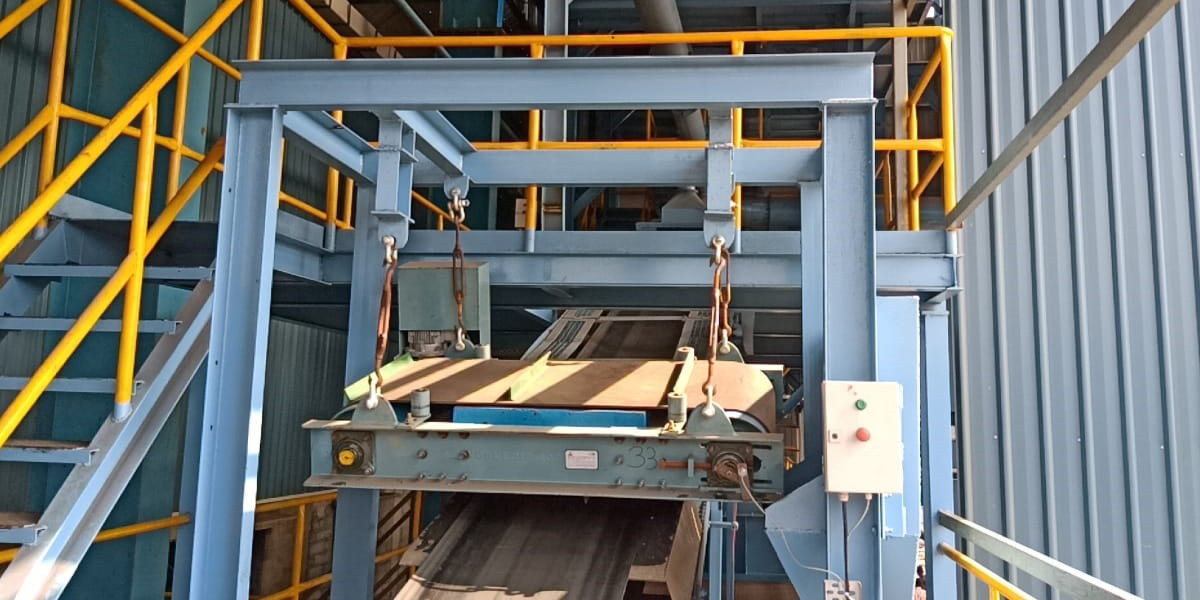
“Electro Overband Magnetic Separator” separation and sorting technology from electrofluxpvtltd.com and used with no modifications.
Efforts to recycle agricultural films and detergent bottles
Recycling agricultural films and detergent bottles has become crucial. These items often end up in rubbish heaps, harming our planet. Yet, teams have figured out smart ways to handle them.
They use special machines to clean and shred these plastics into small pieces. Then, they turn the pieces into new products like trash bags or building materials.
For example, a factory might take used farm plastic and bottle waste. It goes through several steps – washing, cutting down, and melting – to make something useful again. This process saves resources and cuts down on waste.

Next comes the focus on innovative equipment that makes recycling more efficient.

“agricultural mulch films separation and sorting technology …” from www.wasteplasticpyrolysisplant.com and used with no modifications.
Equipment and Technology
New machines and tech are changing how we recycle. They make sorting trash faster and more exact. This helps turn more old stuff into new things. Keep reading to learn about the latest gear in recycling.
Machinex's advancements in recycling equipment
Machinex led the field, winning Recycling Equipment Innovator of the Year on July 24, 2024. They create machines that sort waste fast and well. Their tech finds recyclable materials in trash heaps easily.
This helps make recycling plants work better.
Their equipment uses magnets and sensors to find and separate metals from other waste. This makes sorting faster and more accurate. Machines from Machinex can handle many types of waste, like plastics, glass, and metals.
They turn big piles of trash into neat stacks of things we can use again.
BRT HARTNER's ARCTOS Shredder
Building on the progress in recycling technology, BRT HARTNER introduces the ARCTOS Shredder. This machine changes how we handle waste. It shreds different types of material, making recycling easier.
The ARCTOS Shredder works well with both biomass and municipal solid waste. It ensures that more waste can move from being thrown away to being used again. This tool helps us make less garbage and find new ways to use what we throw out.
Ken Mills Engineering's installation of Bunting metal separators
Ken Mills Engineering put Bunting metal separators to work at Neath Port Talbot. This materials recycling place is in South Wales, UK. They did it on July 23, 2024. These machines sort metals from other stuff people throw away.
The separators find and take out bits of metal. This helps make the recycling process better and cleaner. It's cool for places that handle a lot of waste material.
Technology Zones
In Technology Zones, we explore new ways to handle materials. This includes finding out how machines and smart systems can make recycling better.
Latest innovations in recyclable material processing
Sensor-based sorting technologies like XRF and LIBS are changing how we handle recycling. The second generation of Sense2Sort LIBS sorters makes it easier to find and separate different materials.
This means we can recycle more things correctly. These sorters help in areas like plastics, metals, and other materials recovery facilities.
Sense2Sort-Toratecnica offers solutions that are good for the planet and save money. They use smart machines to sort waste better. This helps turn used items into new products without harming the environment.
Their technology is a big step forward for recycling efforts around the world.

Plastics Recycling, including Separation and Sorting Technology on Show in Dubai
After looking at battery recycling in Basel, we shift focus to the Plastics Recycling Show Middle East & Africa. This event was in September 10, 2024, in Dubai, United Arab Emirates.
It will bring together leaders from the recycling industry. They will share innovations and discuss problems like plastic waste.
Visitors can see new depackaging machines and learn about food waste depackagers. The show will also highlight how X-ray fluorescence and colour sorters help recycle more plastics.
People from all over Africa and the Netherlands Antilles come to find ways to make recycling better for our planet.
Separation and Sorting Technology – A Conclusion
New tech makes waste sorting better. Machines now sort more trash types. This helps recycle more materials like plastic and metal. Events share these updates, improving how we handle waste.
Let's use these tools to make recycling easier for everyone.
Separation and Sorting Technology FAQs
1. What are the latest innovations in waste recovery?
The latest innovations in waste recovery include artificial intelligence for sorting, X-ray fluorescence and laser-induced breakdown spectroscopy (LIBS) technologies for identifying materials, and robotics for efficient separation.
2. How does X-ray irradiation contribute to waste recycling?
X-ray irradiation helps identify different types of materials based on their absorption coefficients when exposed to X-ray radiation. This allows recyclers to sort post-consumer waste more effectively with the latest separation and sorting technology.
3. Can these technologies be used in industries other than waste management?
Yes, they can also be utilised in the mining industry, diamond industry and mineral industry, among others, for beneficial resource recovery while reducing downtime and maintenance costs.
4. Are these separation and sorting methods environmentally friendly?
These methods aim at reusing scarce resources, composting organic matter or anaerobic digestion processes, which makes them environmentally friendly as they promote a circular economy.
5. How do magnetic separators work in the process of metal detection during waste sorting?
Magnetic separators use coils that generate an electromagnetic field to attract magnetic materials, separating them from non-magnetic substances during the process of metal detection in waste sorting.
6. Do these innovative techniques improve profitability in the recycling sector?
Yes, by improving efficiency with less manual labour, reducing downtime due to maintenance needs and enhancing resource recovery rates, all contribute towards improved profitability.
Top 10 UK Solid Waste Management Companies 2025
The UK waste management sector stands as a vital industry worth billions of pounds. The top UK Solid Waste Management Companies are the leading waste management firms in Britain. These companies handle millions of tonnes of rubbish each year. The industry has transformed significantly over the past two decades through strategic mergers and environmental innovations. […]
Ramp Method of Waste Disposal – Landfill Guide & Techniques
The ramp method optimizes landfill operations by creating an inclined surface, allowing efficient waste compaction and daily cover application. Unlike traditional methods, it requires minimal excavation, reducing costs and extending landfill lifespan. Proper implementation and equipment maintenance are key to effective ramp method performance in various terrains…
The Circular Economy In Fashion: Making Clothes Sustainable
Fast fashion fills our wardrobes, but most clothes end up in landfills within a year. Introducing the concept of the circular economy in fashion. It's the best hope for making our clothes sustainable. The global clothing industry creates over 92 million tonnes of waste each year, making it one of Earth's biggest polluters. A circular […]
The Evolution of Food Waste Processing Technologies: From Wet to Waterless Biodigesters
Read on for the latest news on the development of wet and waterless biodigesters as a means of processing Food Waste. As food waste management becomes an increasingly pressing issue for environmental sustainability, the evolution of waste processing technologies has been a game-changer in how we handle organic material. For decades, the food waste processing […]
